5 Foods to Melt Your Belly Fat Away
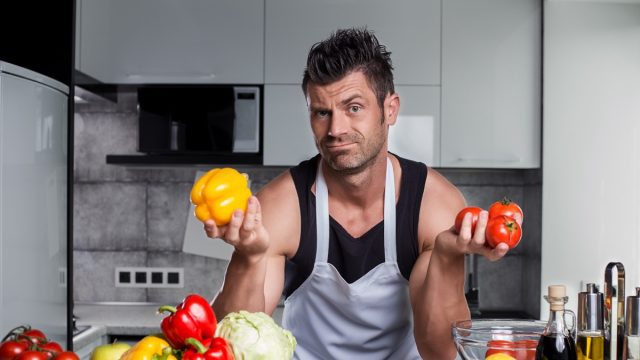
Do you want to lose weight while filling up your body with yummy food? Contrary to popular belief, you don't have to starve yourself to burn belly fat. Jeremy Ethier is a kinesiologist fitness influencer with over 6.1 million YouTube followers and one million Instagram followers. He is famous for sharing science-backed training and nutritional videos, helping people lose weight and get into great shape. He recently dropped a YouTube video revealing five types of food that help melt belly fat away fast. Body Network's Resident RDN, The Diet Diva, Tara Collingwood, MS, RDN, CSSD, LD/N, ACSM-CPT, a Board Certified Sports Dietitian and co-author of the Flat Belly Cookbook for Dummies, weighs in on his suggestions.
Low Calorie Density Foods
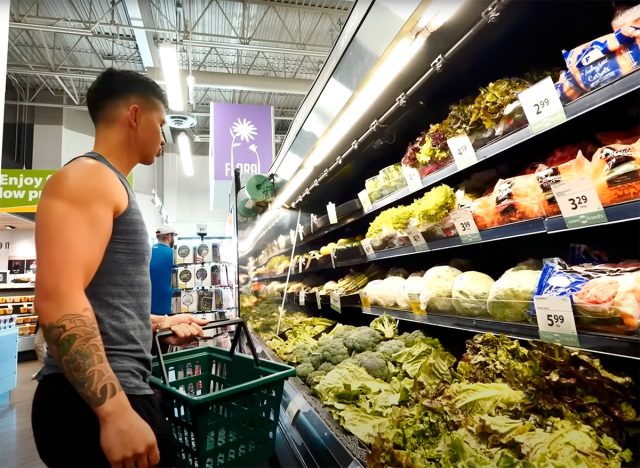
The first food on the list is "low calorie density foods," those which "contain a ton of weight and volume for relatively few calories," explains Ehier. "People who eat these foods consume fewer calories everyday but end up eating more actual food than those who don't eat these foods." He says that the best low calorie density foods for belly fat loss are "most fruits, vegetables, and low-fat foods."
However, he doesn't recommend completely restricting yourself from high calorie density foods. "You just want to eat less of them and add more low to moderate calorie density foods into your diet. For example, during breakfast, instead of having high sugar granola, go for a whole grain cereal with fruit," he says.
Collingwood adds that the concept is also called "volumetrics" which is eating high water, high fiber foods that are dense in nutrition but fairly low in calories. "These foods fill you up and keep you full for longer and you look at a plate FULL of food, which feels good psychologically when you are trying to lose weight and don't feel like you are eating really small amounts of food," she explains.
Lean Proteins
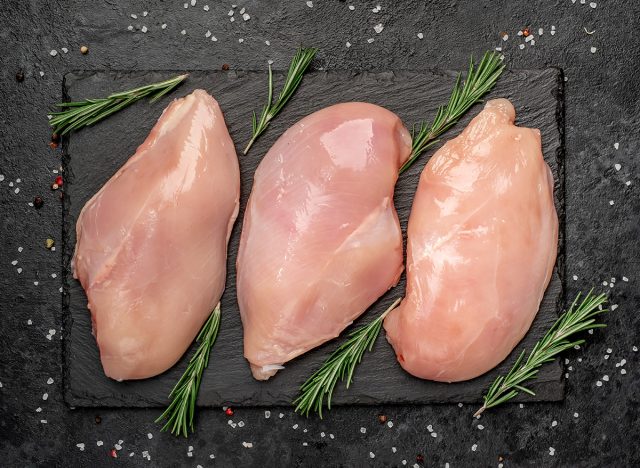
"Depending on the type of food you eat, your body will burn a certain amount of calories just to digest that food. This is what's known as the thermic effect of food and is part of what makes our next food, lean proteins, so effective for belly fat loss. The importance of having enough protein when losing fat goes far beyond this," explains Ethier. "It's the most important food to help you maintain or even build more muscle as you lose fat. This will not only help you look better once you get lean enough to lose your belly fat, but it also seems to correlate well with preventing fat regain after your diet is over."
He recommends prioritizing lean proteins "that deliver significantly more protein for fewer calories," like egg whites, shrimp, protein powder, low-fat greek yogurt, extra lean ground beef, chicken breast, turkey, tofu, and white fish. "You can still have the fattier protein sources in moderation, but by eating mostly leaner proteins, you'll not only consume fewer calories, but you can also potentially swap those saved 'fat' calories for something else."
Collingwood agrees that protein has the highest TEF (thermic effect of food) "which is part of the reason protein keeps you full for longer and is excellent for weight maintenance and weight loss," she says. "Protein should be spread out throughout the day to optimize muscle most effectively."
RELATED: 5 Little-Known Tips for Burning Belly Fat
Omega-6 PUFA-Rich Food
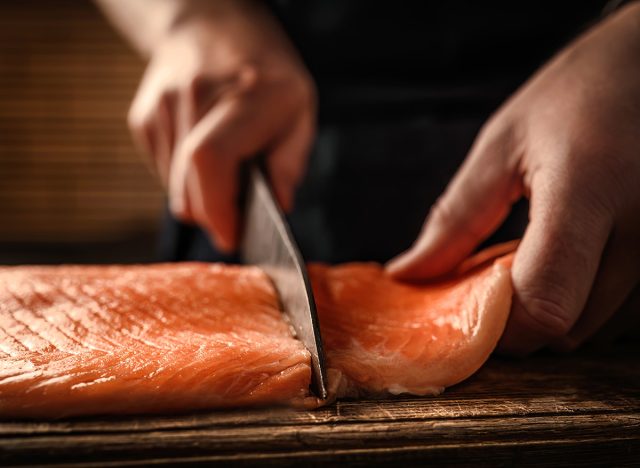
The third type of food is those rich in omega-6 PUFAs. "You need about 20 to 30 percent of your calories to come from fats to support your general health and hormones. But the specific types of fat you eat matter when it comes to belly fat," he explains. "To potentially avoid building up the dangerous fat in the belly and organs, try to moderate the amount of daily fats you get from saturated sources such as bacon, cheese, butter, cream, and fatty meats like pork and beef."
Instead, he says to eat foods rich in omega-6 PUFAs, "such as nuts, seeds, and seed oils, as well as omega-3 PUFAs which have been shown to have other health benefits and can be found in sources such as salmon, tuna and flaxseed." Omega-3 and natural sources of Omega-6 PUFAs are essential for good health "including for the brain and absorption of nutrients," Collingwood agrees. "Saturated fats will not provide as much value and can be potentially dangerous for heart health."
Beverages Sweetened with Non-Nutrtives

The 4th food on our list that'll help you lose belly fat "is a controversial one," claims Ethier, which "was put to the test in a 2015 study, where researchers took 300 overweight individuals and had them start the same weight loss program," he says. The only difference? One group drank an additional 24 ounces of plain water, and the other, water that included a non-nutritive sweetener. "The sugar free group not only experienced significantly greater weight loss, but they were also better able to keep that weight off for good. Why? It's possible that in the water group, limiting access to sweet beverages may have promoted their desire to satisfy their cravings from other sources like candy and desserts," he says. Collingwood notes that non nutritive sweeteners by themselves have not been proven to contribute to weight loss, "but when substituting for sugar containing foods/beverages they can help reduce overall calories," she says. "In this study it isn't clear why people drinking non-nutritive sweeteners would lose more weight, but it is a possibility that it helped to cut back on cravings for other sweets as postulated here."
RELATED: Simple Full Body Home Workout For Small Spaces
Foods You Love, But Modified
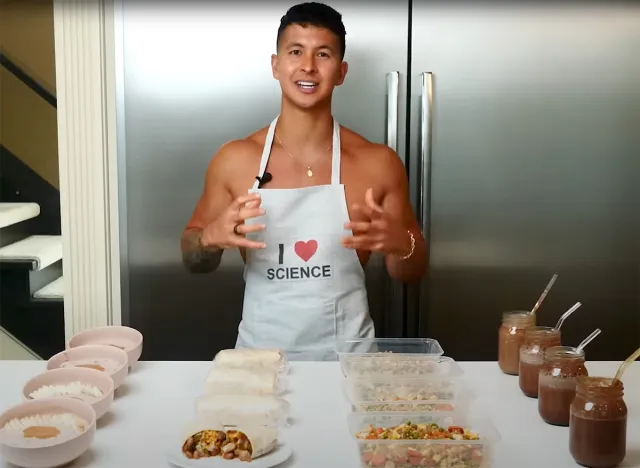
"So far I've given you a lot of great food options to lose fat. But let's be honest, some of the foods I mentioned won't appeal to you. Sure zucchini is a low calorie dense food and yes egg whites are a great lean protein source, but if you don't enjoy those foods then don't force yourself to eat them," explains Ethier.
The key to making your diet stick? Is "to eat your favorite foods," he admits. "Personally, I love wraps, burritos, and shawarmas so I make one every day. But I'll incorporate what I taught you earlier about what to eat to lose belly fat by using a low calorie wrap or tortilla, adding plenty of veggies, using a lean protein source, and adding fats or calorie dense condiments in moderation. So pick a handful of your favorite foods from each of the categories we went through, add a couple of your favorite treats to have every now and then, and that's pretty much your diet. It's as simple as that."
Collingwood agrees. "It is key to eat foods you like and to learn new ways to cook and season lower calorie foods so that you do look forward to eating them and enjoy them just as much as higher calorie versions of the same foods," she says, "If you want something high calorie that just doesn't have an acceptable lower calorie substitute, enjoy it in small portions and limit how often you indulge."
💪🔥Body Booster: Try eating low calorie, high density foods for a week, and see if you notice any diet changes.




